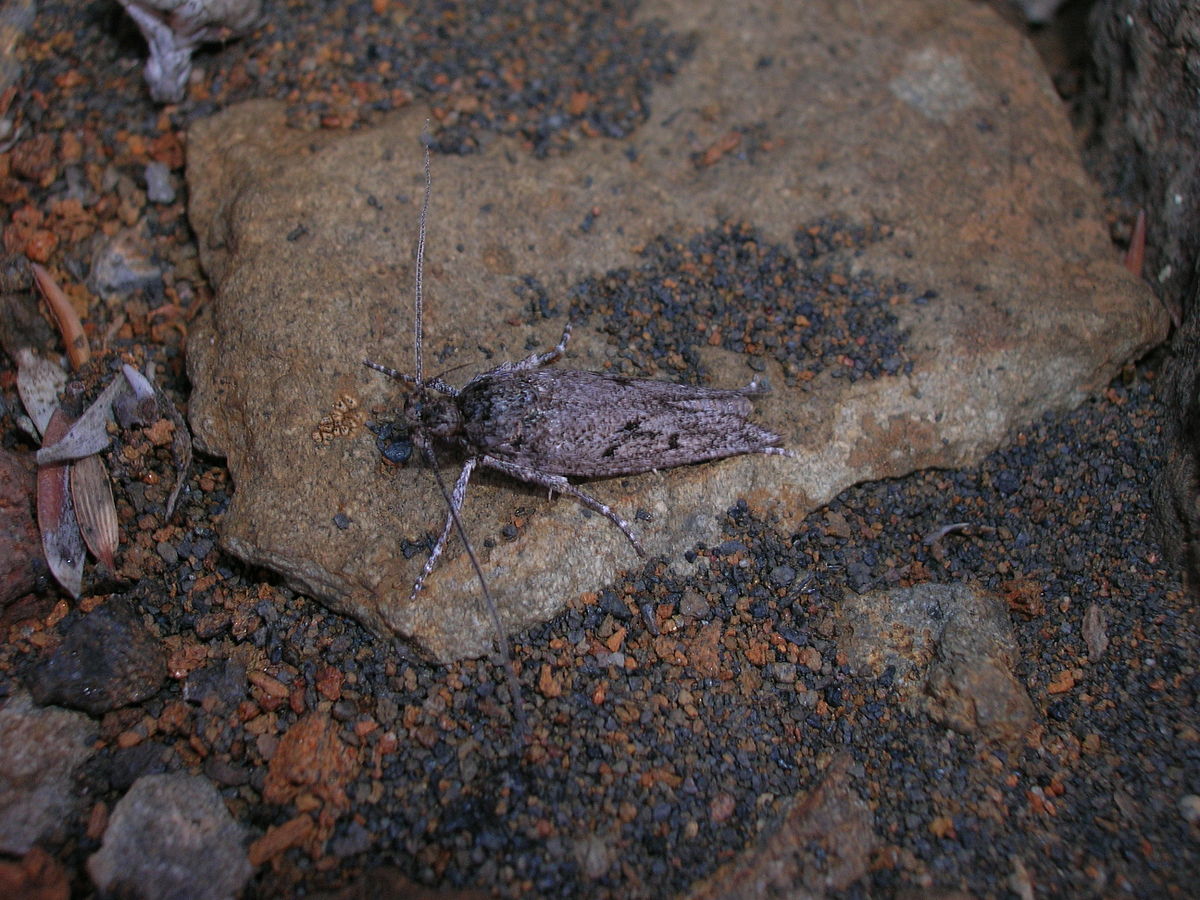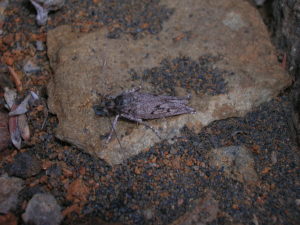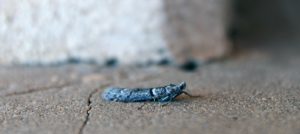

Many species in the Hawaiian islands are known to be endemic (found nowhere else). An example is the Haleakala flightless moth. This moth is not just restricted to the Hawaiian Islands, but it can only be found on the windswept western slopes of the summit of Haleakala volcano. Its scientific name is Thyrocopa apatela. It is, however, more commonly known as the Haleakala flightless moth or the Haleakala grasshopper moth.
Habitat
It survives in very harsh, desert-like conditions near the summit, where temperatures average from 50 to 65 degrees Fahrenheit (10-18°C) during the day, and may drop below freezing temperatures at night. Because the moth lives at elevations above 9,000 feet (2,900 m), the air is thinner and solar radiation is more intense than at sea level; another factor contributing to the harsh conditions of its habitat. The name Haleakala means “house of the sun” and the thin air means the sun is brighter here. The thin air is also one of the reasons there is an observatory on the summit of Haleakala, where light from space is less distorted than at lower elevations.

The moth’s restricted habitat appears to be getting even smaller. Surveys during the 1970’s found moths living at altitudes as low as of 5,000 feet (1,524 m) . Recent surveys, however, only found moths above 9,500 feet (2,895.6 meters), perhaps due to invasive Argentine ants (Iridomyrmex humilis). The abundance of many native insect species is reduced in areas invaded by Argentine ants. Theses ants have been named one of the worlds top 100 worst invasive species.
Advantages to Being Flightless
It might seem odd that a moth with wings is flightless, however several winged insects live in aeolian areas, where winds are strong. In windy habitats , the ability to fly may be a disadvantage. The obvious disadvantage is the potential injury from being smashed against the dry, rock strewn landscape, reminiscent of the surface of Mars. A second disadvantage is that strong winds may blow moths away from potential mates. Remember, these moths are only found near the summit. A third potential disadvantage is that strong winds blow the insects into rainwater where they can drown. So there appears to be some advantages to being flightless.
Ecology and Behavior
The Haleakala flightless moth hops in a similar way to crickets, and is able to jump ten times its body length. Adults are largely scavengers of organic material and the moth caterpillars feed on dead leaves. Beside this, very little information is available on the ecology of the Haleakala flightless moths. A quick review on google scholar turned up only three results pages, and most of the studies found provided little more than taxonomic (biological classification) information.

If you find yourself on the island of Maui, you should make the journey up to the caldera of the now extinct Haleakala volcano to see this remarkable moth and a whole host of other rare species that populate the national park – before they are gone forever.
To see more of the Earths biodiversity, click on the link below to visit MyEarth.